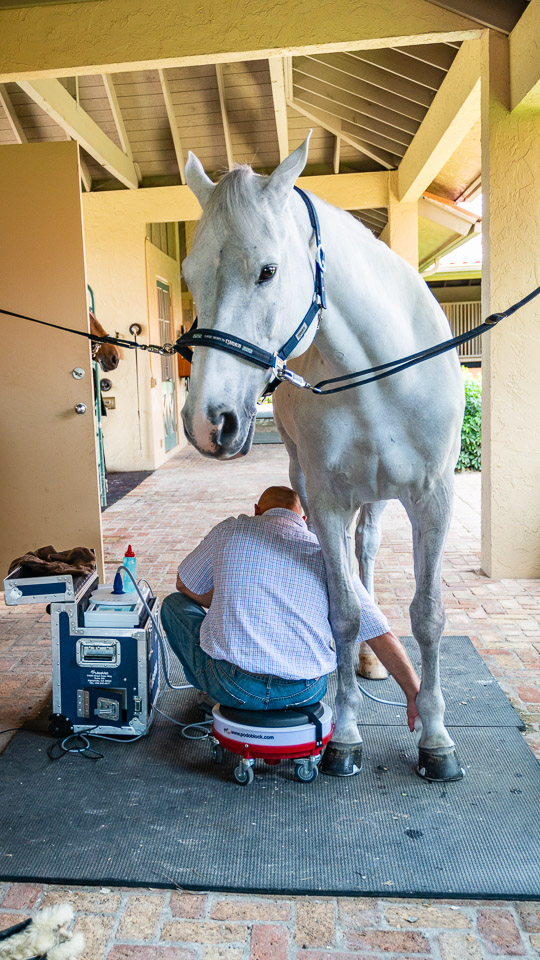
Horsemanship – Irrefutable Law 3
Whenever working with a horse, always use a halter and lead. Stay connected.
The idea behind a physical connection with a horse is that it prevents the horse from positioning themselves into a spot where they can hurt you. There are some exceptions to this but the principle is there.
If you control the head then you usually control the body of a horse. This requires a relatively short distance between your hand and the head. This is about 1 to 2 feet (0.3 to 0.6m). When this distance is shorter or there is no lead and the person holds only the halter then there is an increased chance the horse can break away. There is no leverage or mechanical advantage when the distance is short or is zero. This leverage is needed to help guide the horse back into a safe position.
**CONTINUED IN ARTICLE TAB**
Related material – Sometimes I have a lot of material here that I have written, podcasted, video blogs and other things. They will be listed in this tab.
Use the browser back button or menu to return to the index of topics.
⬇︎ CLICK ANY IMAGE BELOW TO REVEAL MORE INFORMATION ⬇︎
Whenever working with a horse, always use a halter and lead. Stay connected.
The idea behind a physical connection with a horse is that it prevents the horse from positioning themselves into a spot where they can hurt you. There are some exceptions to this but the principle is there.
If you control the head then you usually control the body of a horse. This requires a relatively short distance between your hand and the head. This is about 1 to 2 feet (0.3 to 0.6m). When this distance is shorter or there is no lead and the person holds only the halter then there is an increased chance the horse can break away. There is no leverage or mechanical advantage when the distance is short or is zero. This leverage is needed to help guide the horse back into a safe position.
There are many horse owners using very long leads. These give a distance of 10 feet or more between the hand on the lead and the horse. This loses the leverage and in fact allows the horse to turn around on you and kick you. The idea of having a long lead is popular with many horsemanship styles and are used in their techniques of training horses. In my experience they only create a dangerous situation because of this lost leverage and lost control. The principle I am giving here is not a training technique but a safety technique to be used with any horse anywhere. Longer leads may be used with horses trained for this style of leading but when working with many different horses with different backgrounds a short connecting lead always works.
There are two exceptions though for any lead length in providing leverage and safety. The first is if the horse moves towards you rapidly as in trying to run over you. If you are quick enough to step aside then you can immediately pull their head to the side and disrupt their forward motion. Directing their movement into a wall works the best. However if they decide to go over the top of you then no lead length will be effective.
Another exception to any length of lead working is when a horse turns away from you. Almost all horsemen work on horses from the left side of the horse. If the horse decides to turn away from you it is called turning to the right. Unless you are very quick to respond to this movement the head will get beyond your leverage point and will just run away with you hanging on to the rope. This has happened twice to me. The first time was when I turned out a 2 year old and he bolted away from me. I was relatively new to horses and I thought I could hold on. I cannot run faster than a Thoroughbred. He won. The second time I was inside a regular size box stall. The horse rapidly took a step towards me as I was standing on his left side and abruptly turned his head to the right. I instantly was behind his left shoulder, couldn’t see his head as it was on his other side and I lost any leverage to stop him. I was scraped around the walls of the stall as he ran in a circle and then shot out of the stall door with me still attached to the lead. Only the far wall of the barn caused him to stop long enough to get me untangled enough to separate, then off he went out of the barn with lead attached.
The first lesson here is that when you are attached physically to a horse you must also be aware and connected mentally. Holding a horse while texting or on a phone will work most of the time. It is the one time that it doesn’t work that you will become injured or the horse escapes and becomes injured.
The second lesson here is if you don’t use a short lead when working with a horse you will never have the ability to apply leverage and correct the position of the horse. This allows the horse to potentially hurt you and that is what we are trying to avoid.
Halters on horses provide a connection point for the lead and give you the ability to control the head. Several adaptations have been developed for halters to apply pain through hard knots embedded into the halter or moving pieces that create pressure on the head when tightened. Other methods of applying pain to the horse is to place a lead with a chain on the end either over the nose of the horse, through the mouth of the horse like a bit or under the lip and over the gums of a horse. Most of the time these applications of pain work to help control a fractious horse especially when a necessary procedure is required such as cleaning a wound. However most of the time they are just replacements for a person’s lack of experience with horses. Regrettably several horsemanship training techniques employ the use of these gimmicks to overcome the harder to learn mental connection with horses. It is similar to veterinarians automatically giving sedation to horses so that a procedure can be done. Both the sedation and the use of pain adding techniques are used to shorten the time to compliance and reaching a desired goal or agenda. It basically causes submission of the horse to the handler. It is not horsemanship.
It must however be remembered that horses are bigger and stronger and like children, need rules and boundaries. The attachment device is called a “lead” because it is used for leading. There is a section of horse owners who believe that no attachment is necessary for leading and this is called “at liberty” training. With hours of work many horses can be taught to do things with the human without the need of a physical attachment. They come from the field when called and move about the barn with the use of hand signals and / or voice commands. While this can be impressive it requires a horse to be trained to it. Law 3 of a physical connection with horses is for the vast majority of horses that do not have this training or when they do have it are being asked for something they have not been trained for. Veterinarians see horses well trained for liberty work who forget their training when asked to stand for an injection.
The rule for everyone for any horse is use a halter and lead rope if you want to minimize the chance of injury. But it is WAY more important to realize this one point. While you may be an accomplished horse trainer and have hundreds of horses trained to liberty work or just have the ability to work around your horses without this basic principle of a physical attachment applied – someone younger and with less experience is watching. If a child sees you with the bad habit of neglecting this fundamental rule it is like giving the car keys to them without training and letting them go on a road trip. It might work for a while but the accident will occur. The fundamentals must be learned before advanced training can occur. Unfortunately when you get away from injury for a long time you start to feel invincible and you test the boundaries of safety. Then the new horse enters your life and like my veterinary mentor who had worked decades with stallions, you get kicked and die. Always use a halter and lead when working on horses even if the time needed is only a moment. For in that moment can be the realization that you should have done so – just before the pain starts or your lights go out. And the children are always watching you.
Horses that quickly turn away from you in a stall can easily get their hind end in alignment with you to deliver a kick that can end your life. This is actually one of the ever-present scenarios I protect myself against every day when I work with difficult horses. I have had some close calls. I suggest you practice this technique constantly and be vigilant of this possibility. Stay focused and never allow the head to get away from you. Remember Law 3 but even with a halter and lead on a horse, if the horse turns away from you then you have lost your connection.
What to do with horses that turn away from you
- Additional tables
- Links to other in house articles
- Links to outside articles
- Reference material used in developing this topic.
There are no related articles here if you don’t see linked items.


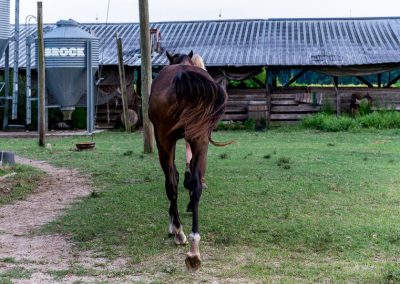
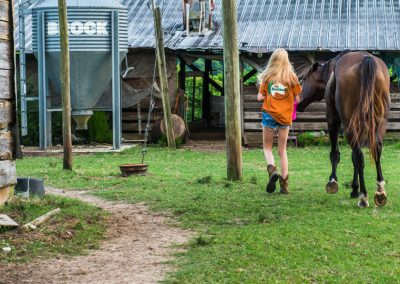
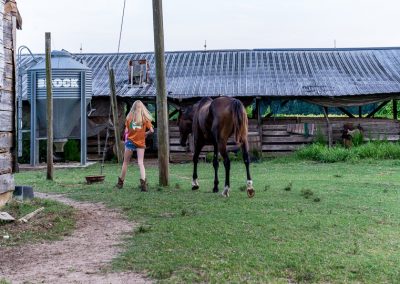
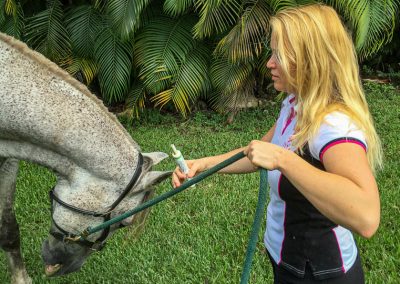
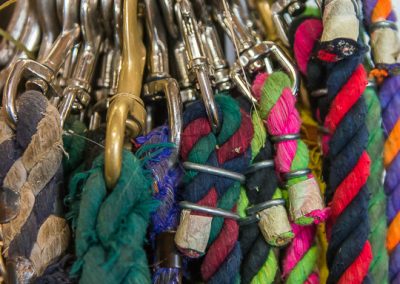

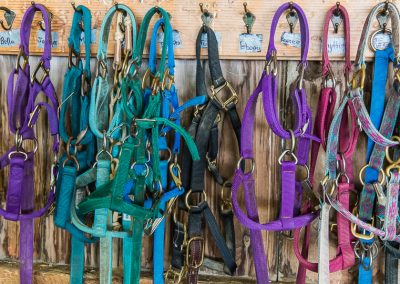
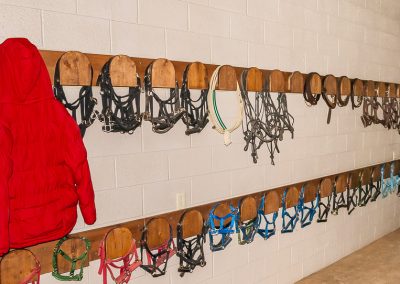


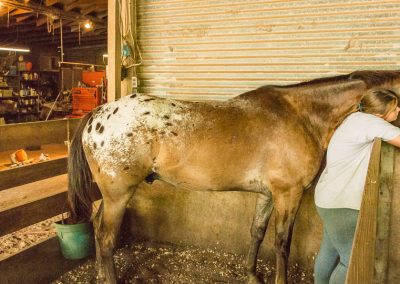
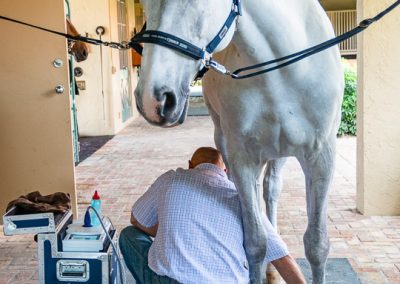
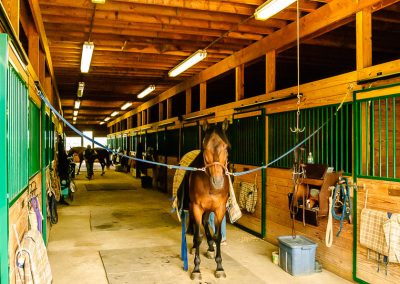
Responses